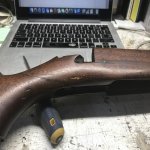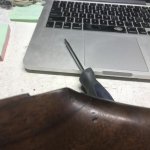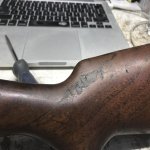https://imgur.com/a/LNMFxvY
Just got a nice k98k but the stock has 2 hairline cracks suspciously symmetrical on both side of the stock. Its dosent move but im worried it might be the begging of something worse. On the other hand it dosent show where the trigger mechanism sit. In the the red circle there is 2 laminate layers that are not glue together anymore. Should I use epoxy or wood glue to fix the last one? Thank you for your expertise.
Just got a nice k98k but the stock has 2 hairline cracks suspciously symmetrical on both side of the stock. Its dosent move but im worried it might be the begging of something worse. On the other hand it dosent show where the trigger mechanism sit. In the the red circle there is 2 laminate layers that are not glue together anymore. Should I use epoxy or wood glue to fix the last one? Thank you for your expertise.
Last edited:














































































